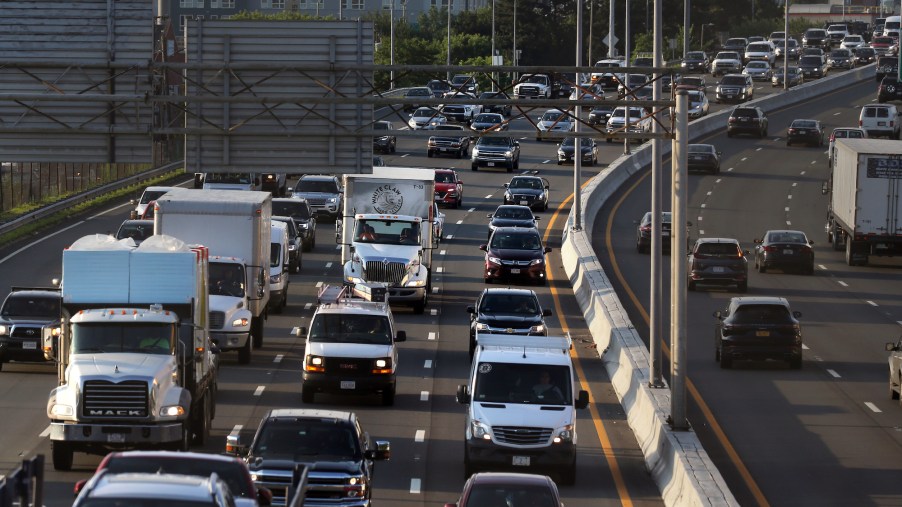
The Lane You Should Avoid When Driving in a Busy City
New York, Philadelphia, San Francisco, and other big cities are among the worst places to drive. Navigating these areas can cause accidents if everyone isn’t practicing car safety. Big cities can also eat up gas if you don’t have a fuel-efficient vehicle. But you can cut fuel costs and your chances of a crash if you know which lanes to use on highways.
The kinds of lanes you’ll find when driving in big cities
Bigger cities’ highways usually have two or more lanes traveling in the same direction. The right is the designated turning lane for the right-hand side, where you find exit ramps to city streets.
The far left lane is for turning left or exiting the highway on the left-hand side. Any lanes in between are for traveling in that direction. You can signal to move from one to another to pass other vehicles. The right lane is usually reserved for the slowest vehicles. The farther left the lane, the faster the flow of traffic.
But speeding will increase your chances of getting into an accident, DriversEd.com reports. Some cities, like Philadelphia, see more road collisions than many other large metro areas.
So, which lane should you avoid, and why?
If you’re driving in an unfamiliar city or driving slower, travel in the right lane. Stay out of the left lanes because their traffic flow is much faster, increasing your chances of getting into an accident. Avoid using the left lanes unless you absolutely have to, such as when taking an exit ramp on the left.
If you’re accustomed to driving on certain highways, you already know how to drive with traffic flow and where you need to exit. But motorists who aren’t used to driving in those areas could easily miss their turnoff because of traffic distractions around them.
Of course, if you’re driving on a two-lane highway, you can use the left one for passing the vehicle in front of you. But it would be best if you still stayed in the right lane until you reach your turnoff. And pass with an abundance of caution if you’re on a multilane freeway.
With cars speeding around you, merge into another lane only when it’s safe to do so. Otherwise, you could get into an accident or possibly cause a collision with the cars behind you, whose drivers might have to swerve to avoid hitting your vehicle.
Smaller vehicles can be easier to handle on these roads and can help avoid collisions. That’s because they have a smaller footprint on the road.
Tips for navigating big cities
Another thing you should avoid is changing lanes frequently, Edmunds reports. Though you might think switching to a seemingly faster-moving lane will get you to your destination quicker, it will shave off only a few seconds from your ride. Instead, stay in one lane most of the time to avoid increasing your chances of getting into a crash by merging into other vehicles.
Another tip to keep in mind is to know your route before setting off on your trip. Learn which roads to avoid and which might have construction. By embarking on your trip blindly, you could get lost or arrive late because you ran into road construction.
Start with a full tank of gas if possible. You never know what you’ll run into. Finding a gas station in a big city could be difficult, or the ones you do find could cost you more to fill up. If you’re stuck in traffic, shift your vehicle into neutral to prevent burning too much fuel while you’re idling.
Driving in big cities can be a headache, but it doesn’t have to get you down. Use these tips to avoid experiencing accidents or other problems when traveling in unfamiliar areas. If possible, use city transportation to navigate cities like San Francisco, where gas can be expensive.


